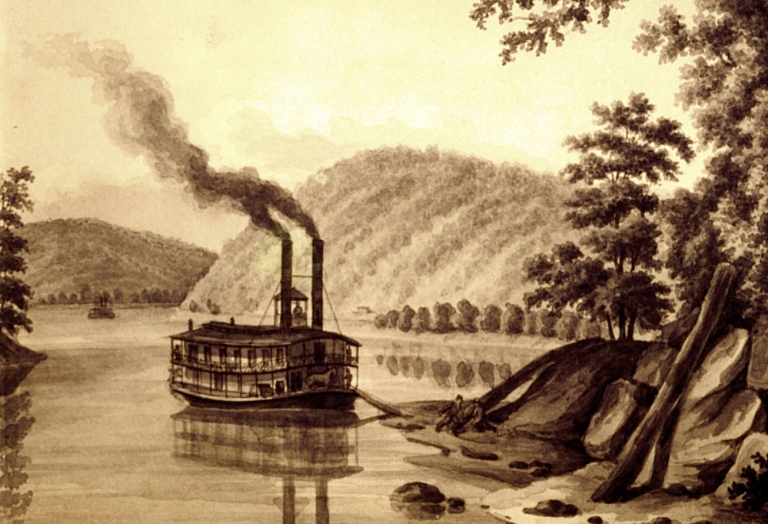
Residents of the mountain counties of West Virginia have traditionally weathered the ravages of communicable diseases with some success. Isolation here flattened the peak of most outbreaks, with the notable exception of the air-borne "Influenza of 1918."
Outside the mountain counties, epidemics might destroy without restraint, and the cholera outbreak of 1832-1834, which battered the more accessible lowland areas, provides a painful example.

Wheeling was then the hardest-hit community in what would become West Virginia. With a population of 15,584, it was the largest city in the Ohio Valley region, and the Ohio River itself was then among the nation's chief travel routes.
Hundreds died, and fear of the epidemic caused a mass exodus from river towns into surrounding communities.
At one time the epidemic was so serious that coffins lay unburied in Wheeling graveyards because of the lack of gravediggers, according to historian Charles Bell, who described the chaos at Wheeling:
"The years 1832-'33-'34 were the years that cholera prevailed in this community, causing great alarm and the flight of many citizens to surrounding towns and a large number of deaths among the residents of Wheeling.
"In the year 1833, Noah Zane, one of the original town proprietors and owner of a large amount of property, died from cholera, which was particularly fatal in that year.
"Most of the interments at that time, and for some years afterward, were made in the old graveyard on the site now occupied by the B&O railroad between Chapline and Eoff streets and 16th and 17th streets.
"In 1833, when the mortality was greatest, I saw a number of coffins having corpses in them—I think 15 or 16—lying unburied on the west side of the graveyard for want of gravediggers. This seems incredible but for the fact of the frequent deaths and the great alarm prevailing at that time, and my remembrance of the circumstances is quite distinct."
Thanks to modern science, mankind's ability to manage the destruction of epidemics has grown greatly. Between 1816 and 1923, six cholera pandemics occurred as commerce, migration, and pilgrimages increased, though the water-borne disease has been virtually eliminated in developed nations.
Sign up to receive of FREE copy of West Virginia Explorer Magazine in your email twice weekly. Sign me up!




























